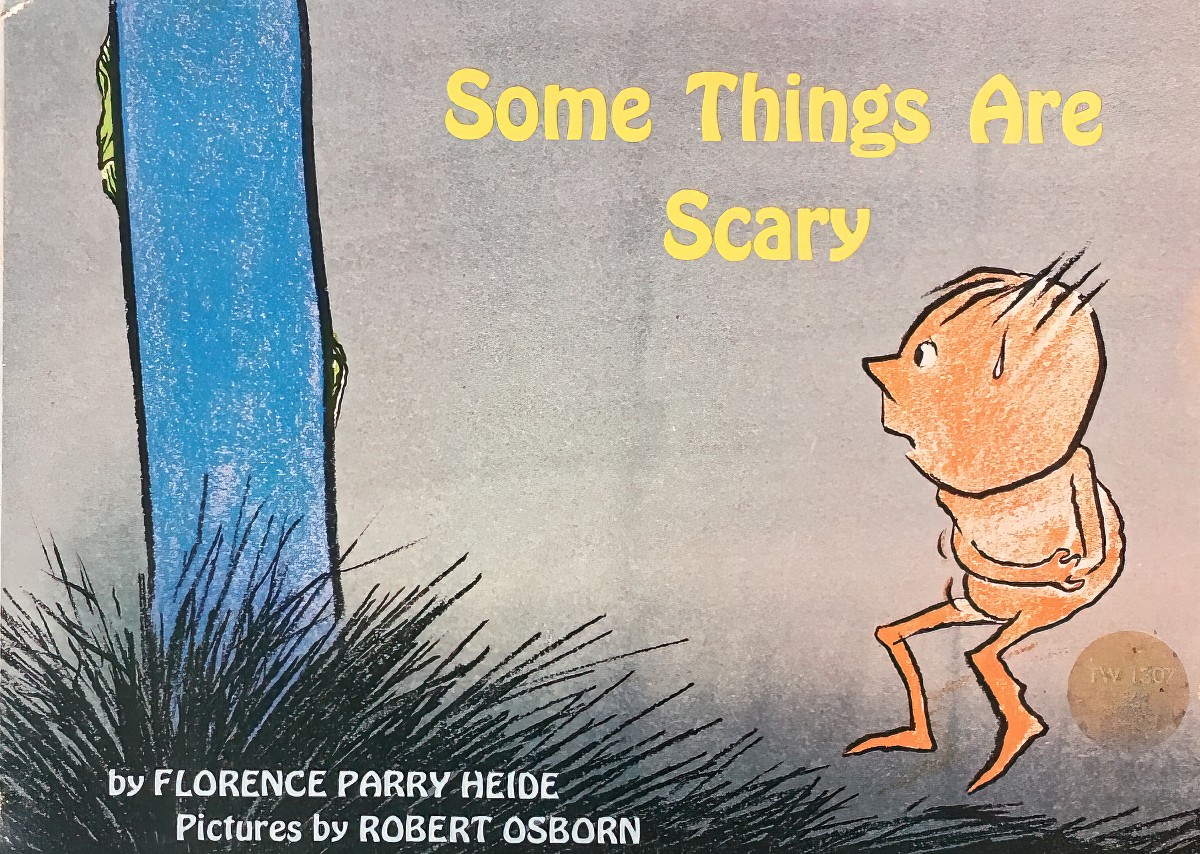Some Things Are Scary is a favourite from my own childhood, and now that my daughter loves it just as much, I appreciate its timelessness. This book would make an excellent mentor text for a classroom of young writers. They might use the structure to create their own story about scary things.
I only have the old version, published 1969 by Scholastic. The pictures by satirist Robert Osborn fit the story perfectly. (Osborn was a direct influence on the Dilbert cartoons.) It appears the book has been rewritten and re-illustrated, and the later edition seems to include more modern fears. For example, the fear of a friend moving away, in a more mobile, modern world. This page doesn’t exist in the earlier edition:
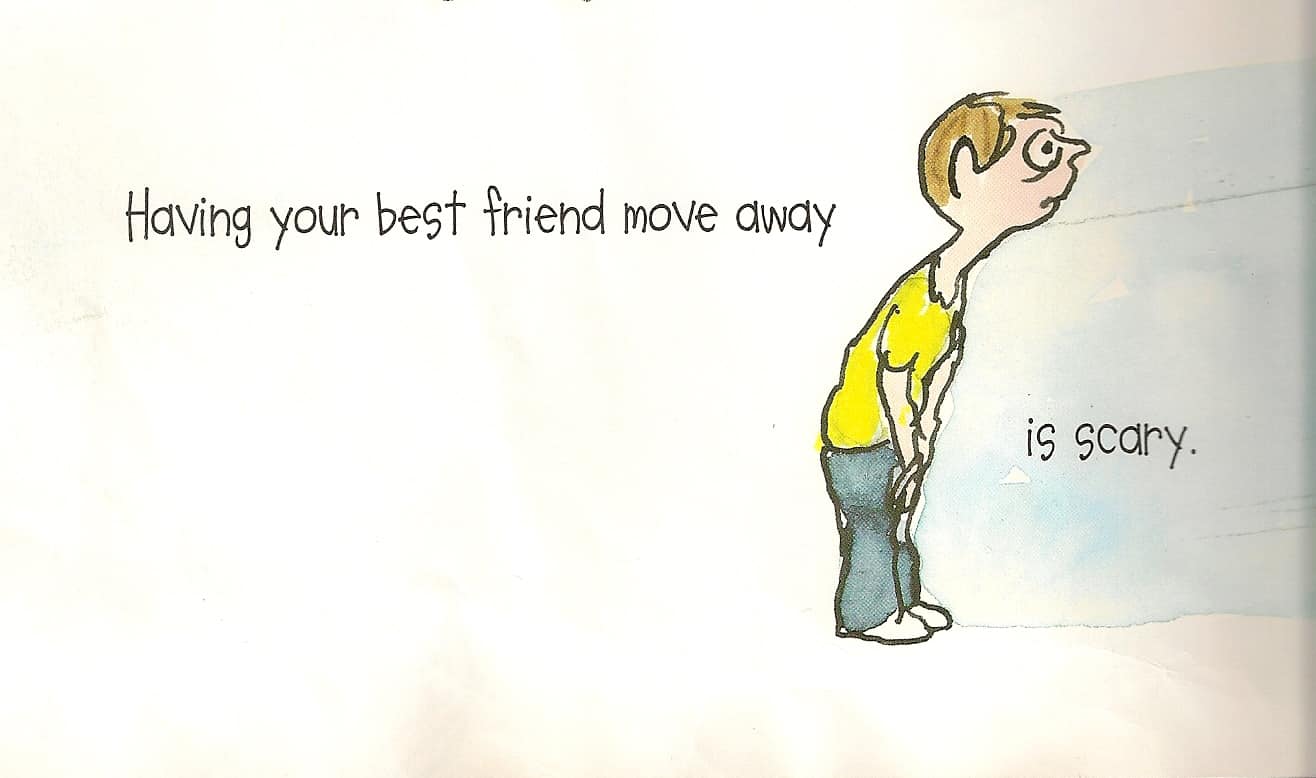
The hamster page doesn’t exist in the original, either:
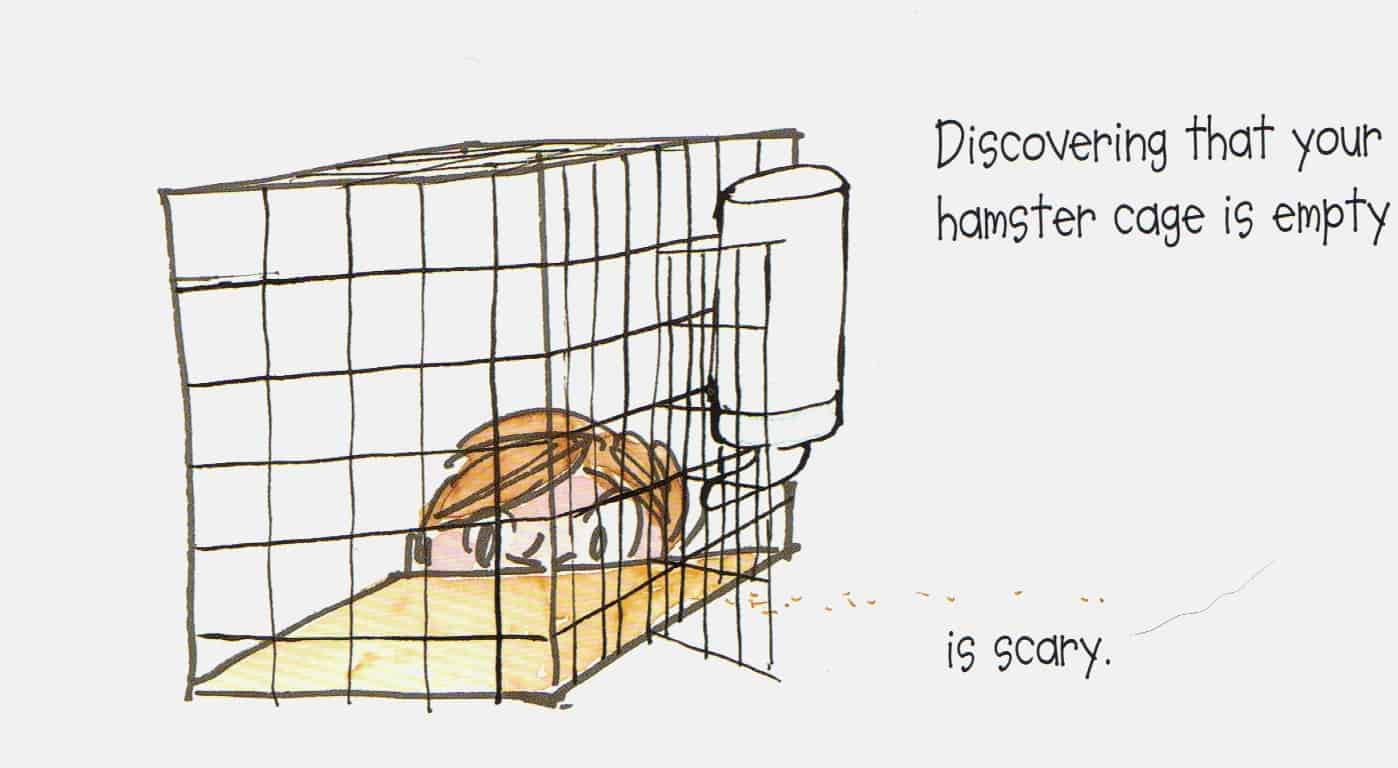
ABOUT THE AUTHOR
Florence Parry Heide (rhyming with tidy) sometimes wrote under the pen name of Alex B. Allen, when she collaborated with other authors. I’d love to sit down and ask her what was behind the choice of a male name — was it a response to industry sexism? (The same kind that made J.K. Rowling publish using initials rather than the ultra-feminine name of ‘Joanne’?)
She lived from 1919 until 2011, which confirms my theory that being a children’s author is almost a recipe for a long life. (Beverly Cleary, for instance, recently turned 100.) Florence started getting published at the age of 48, presumably after her children had become independent. (She had five all up.) I’m not sure how long she had been writing before getting published, but I guess she would have been quite busy running the household, so she may not have picked up the pen until she was in her late forties.
Over the course of her lifetime Florence wrote over 100 works, including poems and songs. She is best known for the Treehorn books, with Edward Gorey.
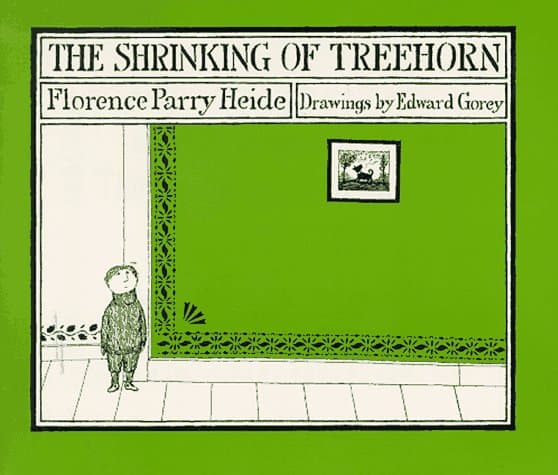
INSPIRATION FOR THE STORY
Florence Parry Heide wrote SOME THINGS ARE SCARY, a humorous look at childhood bugaboos, more than thirty years ago. “I had finished another book and was in the mood to write something else,” she says. “I decided to get some kindling from the garage, reached into the kindling box and—good grief!—grabbed something soft and mushy. I fled back to the house, scared to death.” A brave return visit to the kindling box revealed the object of terror to be nothing more than a discarded wet sponge, but the thought remained: some things are scary. As she recalls, “What scared me as a child was that I’d never learn how to be a real grownup—and the fact is, I never did find out how it goes.”
NOTES ON THE ILLUSTRATION
Here’s an example of what a great cartoonist can do in just a few lines:
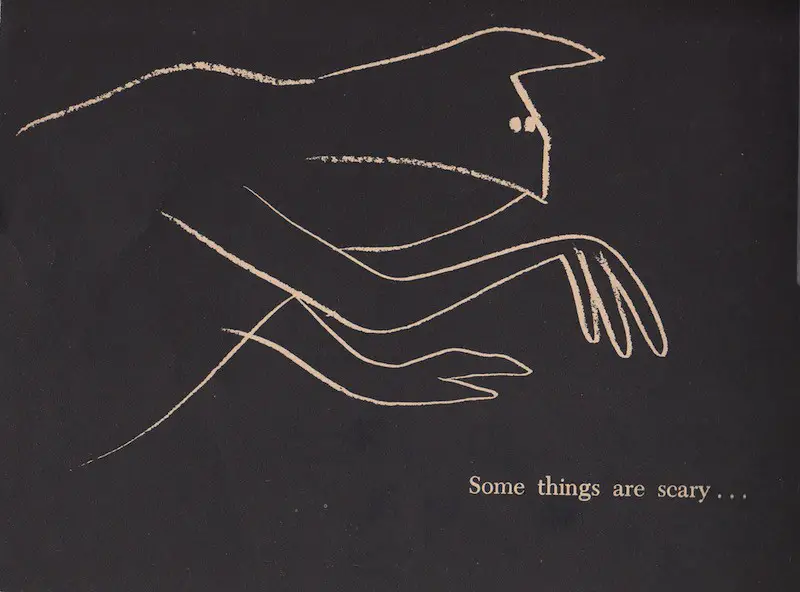
In the older picture books colour was limited too, due to cost. The pages which make use of ‘stock scary’ are white crayon on black paper. (Witches, pirates, skeletons and this scary monster, who bookends the narrative.)
When colour is used it’s loose and sketchy, as if a child has coloured the line drawings themselves. In fact this copy of the book does have some kid’s scribbles in it, but this is the illustrator’s. The unintended benefit of this style of cartooning is that it encourages kids to try drawing and colouring for themselves — art looks doable! (Of course, once you try it, it’s very hard.)
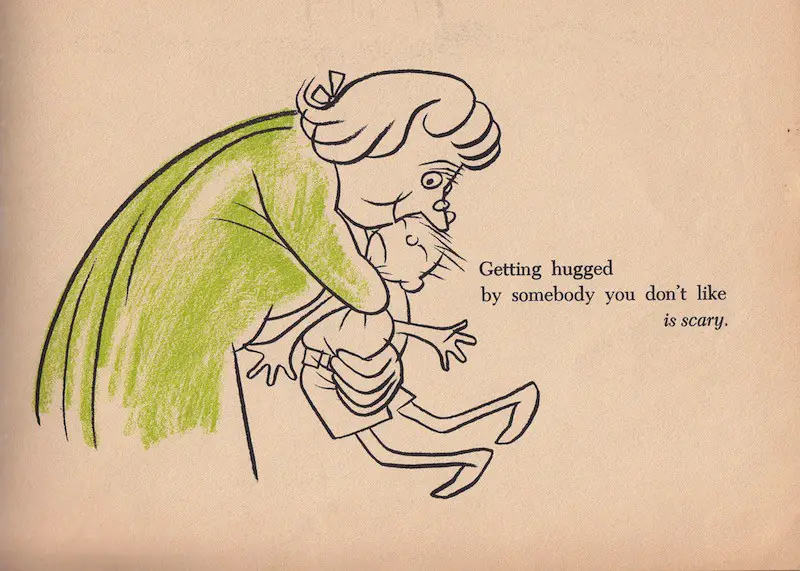
NOTES ON THE WRITING
One way of eliciting a laugh is to juxtapose the ordinary with the ridiculous. This book does that perfectly: Receiving socks as a present does not compare to the level of fear you’d experience when being eaten by a huge reptile.
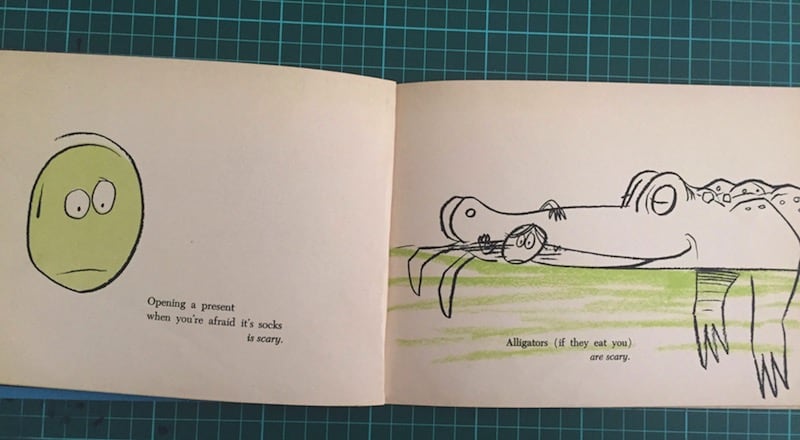
The author’s syntax has a distinctively childlike quality to it, and it comes from ditching simple sentences in favour of an extra clause:
Holding onto someone’s hand
that isn’t your mother’s
when you thought it was
is scary [italics from the original]
The following is the page that elicits the biggest laugh from my daughter:
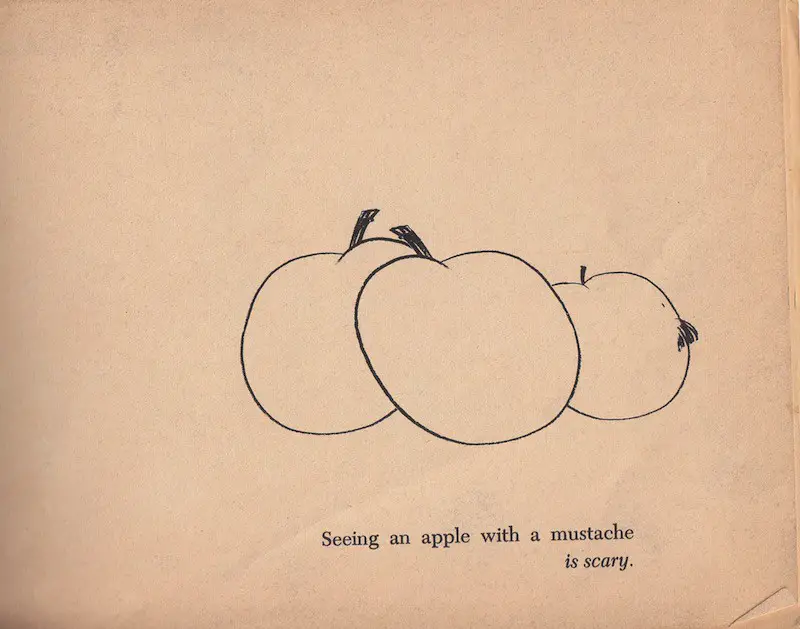
The even more hilarious thing is that after reading this book she did find an apple with a ‘moustache’ — certain imperfections in winter fruit do actually look like moustaches. I’m left with no doubt the author also once ate an apple with a moustache. It takes a genius writer to save these observations and position it in just the right part of the story — after many equally ridiculous scenarios, but which form genuine fears. This one is a scary example the child reader won’t have encountered before (probably).
Keep an eye out for a moustache next time you eat an apple.
FOR FURTHER INVESTIGATION
If you liked this book you may also like “Tear-Water Tea” by Arnold Lobel from Owl At Home.
